MDRS Crew 189: Team ISAE-Supaero
Mission Summary Report March 9, 2018
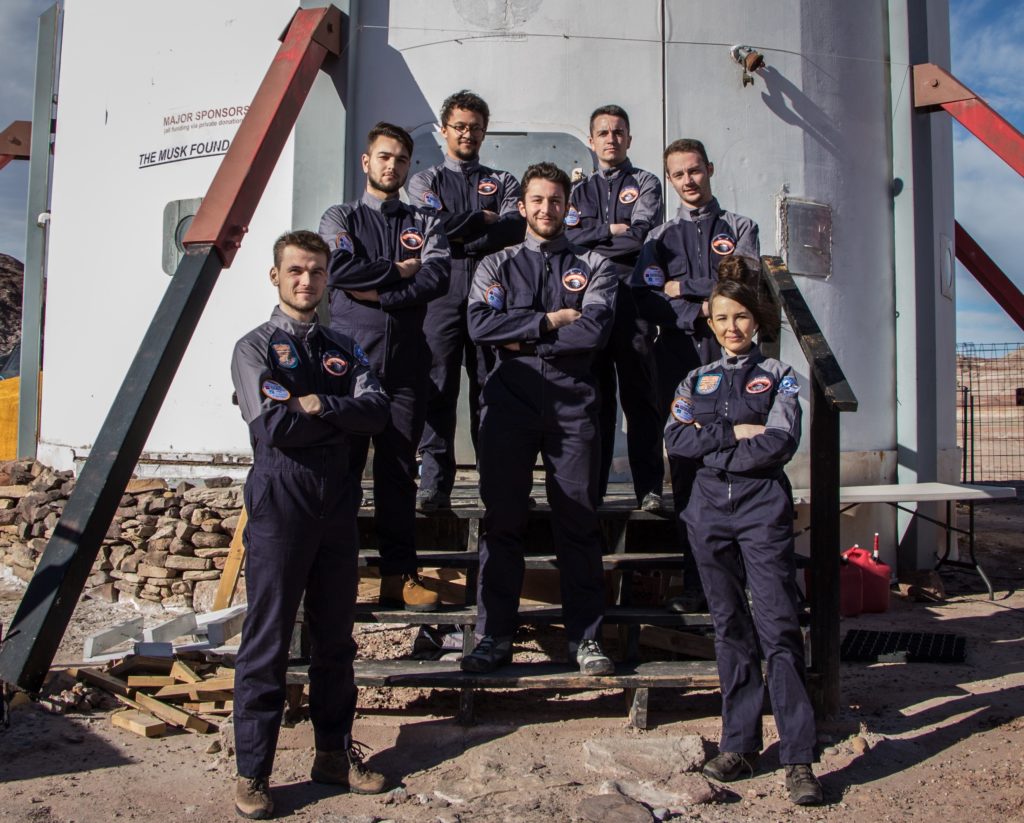

1) Introduction
a- MDRS 189 mission origins
| Crew Member |
Country |
MDRS Role |
| Victoria Da-Poian |
France |
Commander |
| Louis Mangin |
France |
Commander |
| Jérémy Auclair |
France |
Greenhab Officer |
| Benoit Floquet |
France |
Astronomer |
| Laurent Bizien |
France |
Health & Safety Officer |
| Gabriel Payen |
France |
Crew engineer |
| Alexandre Martin |
France |
Crew journalist |
Team ISAE Supaero has begun their fourth rotation at MDRS, comprised of three weeks of intense research, team building and simulation training on Mars. Our team is composed of seven highly motivated scientists, engineers from the French aerospace engineering school ISAE Supaero.
b- Crew objectives
- To productively function as an interdisciplinary team of aerospace engineering students
- To gain team and individual experience in a Mars analog simulation
- To learn from the team’s collective background and experiences
- To produce a scientifically publishable report, including experimental results
- To promote awareness and passion for space exploration via education and outreach
- To conduct engaging experiments that will be shared on the team website
- To share with the public how research is conducted in an analog situation
- To study crew group dynamics and teamwork of a Mars analog mission
- To obtain scientific results for our sponsors (human factors researchers, CNRS researchers)
- To improve the EVA performances during our simulation
- To fix and clean materials in the station
2) Crew 189
a- Crew bios
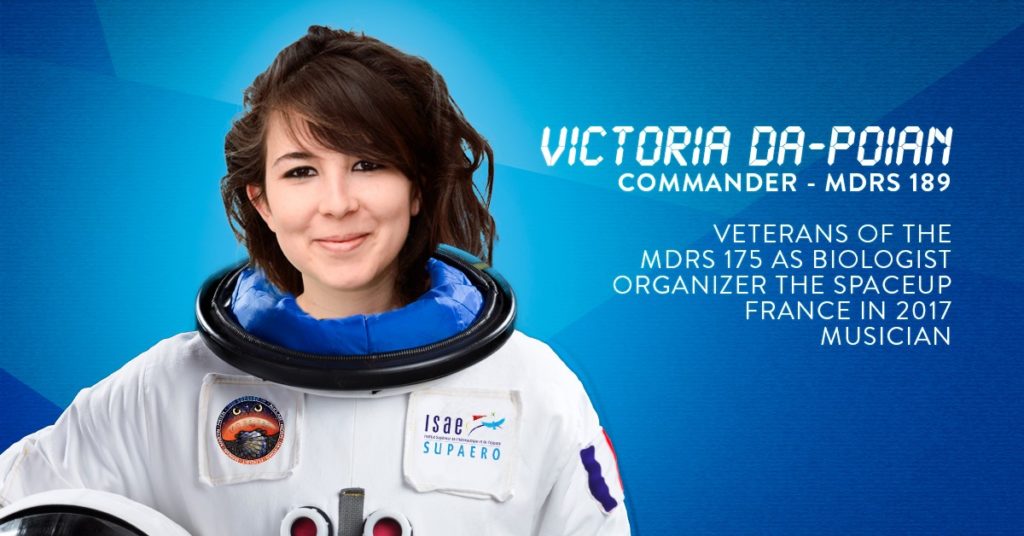
Victoria Da-Poian will be the Commander of the MDRS-189 mission. She is one of the two veterans taking part in the new mission as she was member of the MDRS-175 crew as the biologist. She is an active member of ISAE Supaero space events as she organized the SpaceUp France in 2017 and took part in different space related associations (space pole and cubesat club). She was also vice-president of the « Junior Enterprise » of ISAE-Supaero (Supaero Junior Council) and Ambassador of the social and cultural expansion of our school (OSE ISAE Supaero). After her 2017 mission, she completed an internship at the Astronaut Training Center in Cologne (ESA / EAC), and is currently doing an academic exchange in Moscow. In her free time, she enjoys practicing piano, violin and climbing.
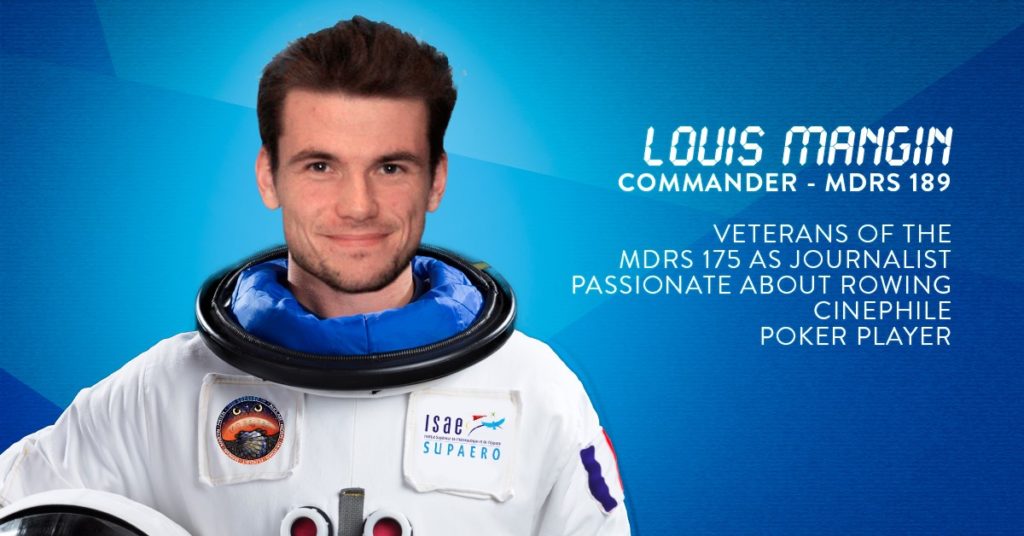
Louis Mangin will be with Victoria the commander of the MDRS 189 mission. He was already part of the crew 175 as the journalist. He is currently working as a trainee in Lyon in a start-up that uses the latest AI technologies to minimize the electrical consumption of buildings. When he was living on the campus, he was a rower in the ISAE-Supaero rowing team, organizer of the Supaerowing student regatta, and a tutor with the social association OSE ISAE Supaero. In his free time, he is also a runner, a mountain-climber, a cinephile or a poker player.
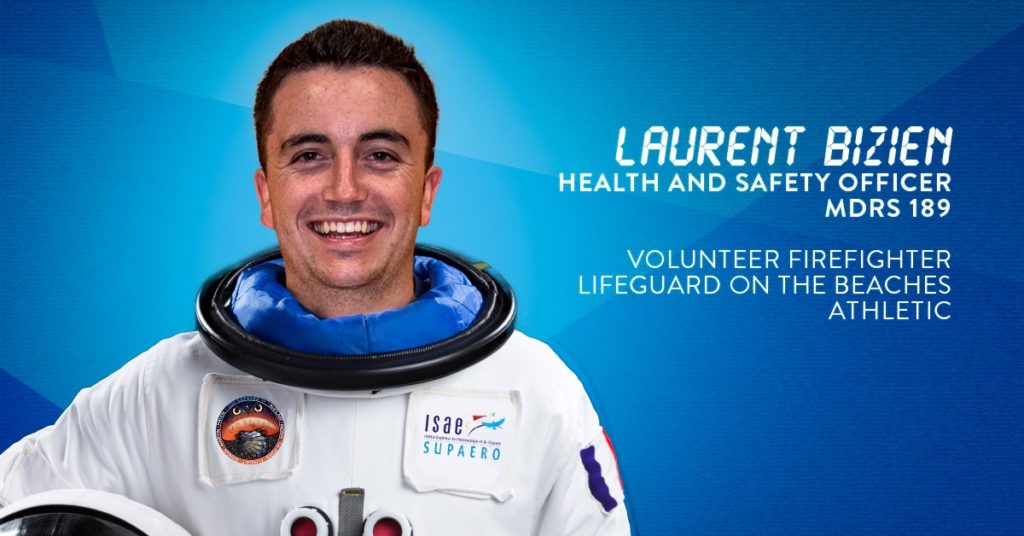
Laurent Bizien will be the Health and Safety Officer of the MDRS-189 crew. Promotion 2019 of ISAE Supaero, he is the current treasurer of the school’s charitable association (Solid’aires). As a volunteer firefighter as a lifeguard on the beaches, he passed several first aid diplomas. He is a candidate for a semester at the Moscow State University and an internship at NASA. In his free time, he practices baseball, volleyball and skydiving.
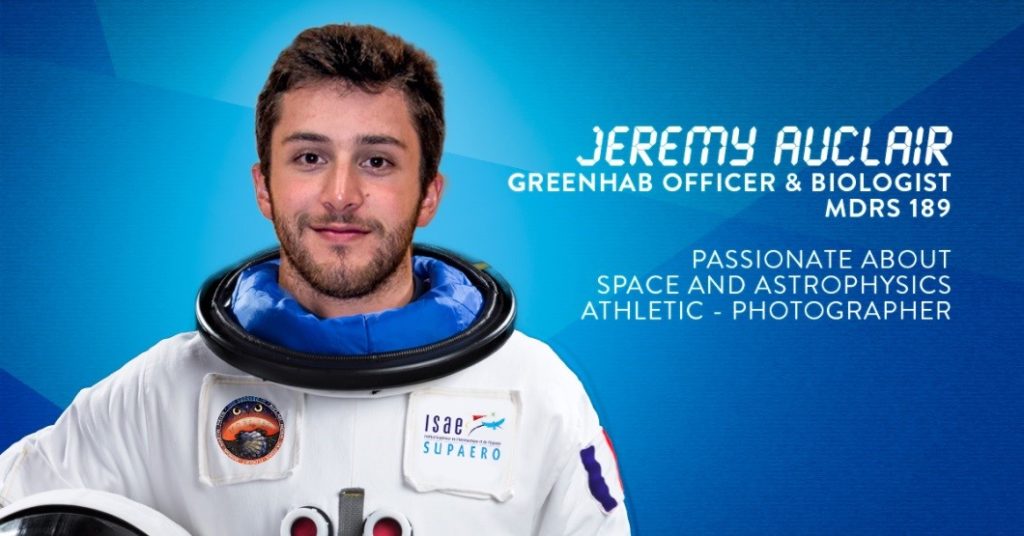
Franco-American born in France, Jérémy Auclair will be the GreenHab Officer and the Biologist on board. Promotion 2019, he is an active member of the club, very invested for the smooth running of the next mission. Passionate about space and astrophysics from his young age, this mission is one more way to flourish in his formation. He plans to do an internship in North America in the field of aerospace. He is also an active member of the school’s associative life, and various clubs with varied backgrounds. During his free time, he enjoys practicing sports, rowing and volleyball, as well as getting lost in reading and taking pictures. He will also be the photographer of the mission.
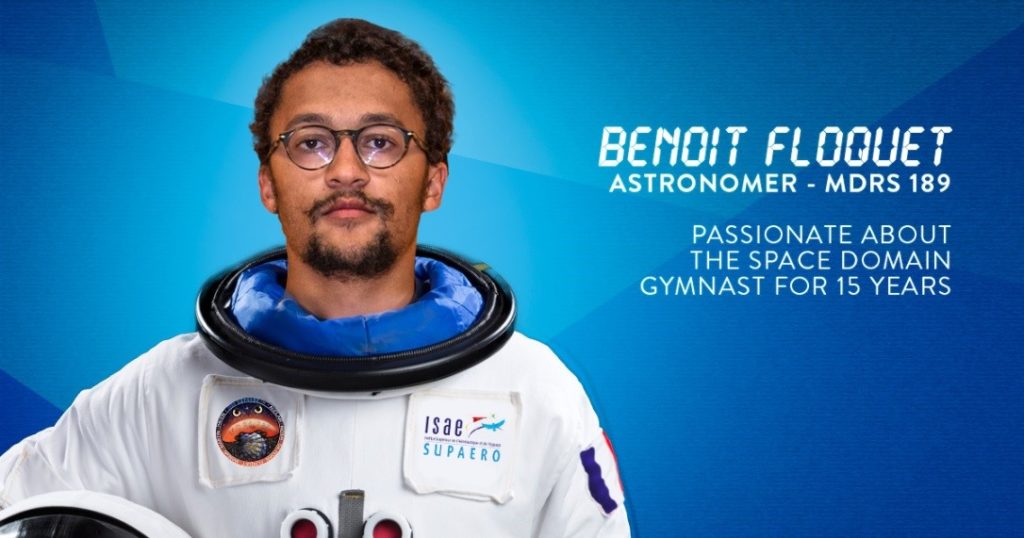
Promotion 2019, Benoit Floquet will be the astronomer of the MDRS-189 mission and is the current treasurer of the club M.A.R.S. Passionate about the space domain for many years, he is also involved in our school’s associative life. He is responsible of the Solidarity pole of the Students Association and takes part into the entrepreneurship (ISAE Supaero Entrepreneurs) association in the communication pole. Also a sportsman, he has been practicing gymnastics for 15 years and skydiving. He applies for a Master in Innovation at the French famous school « Polytechnique ».
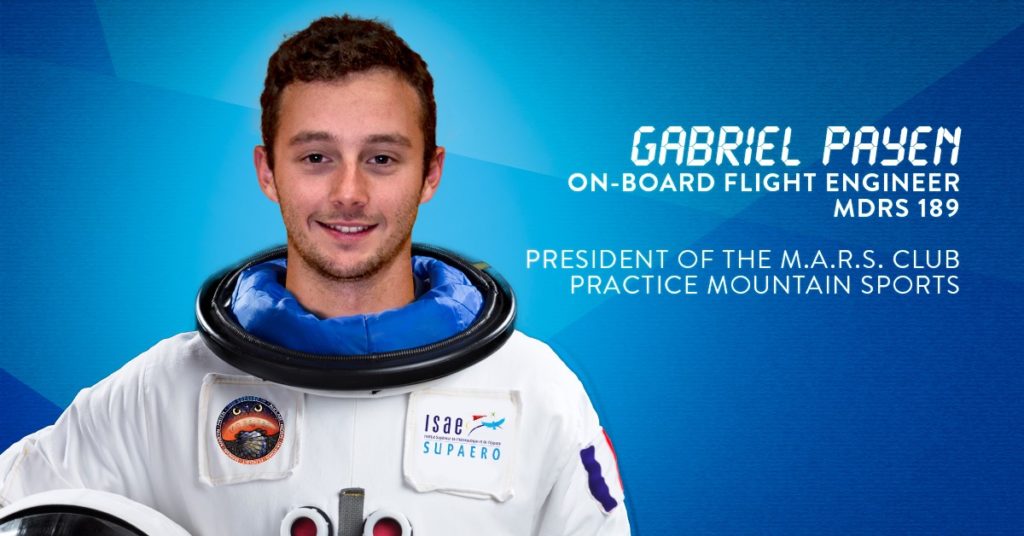
Promotion 2019, Gabriel Payen will be the on-board flight engineer of the MDRS-189 mission and is the current president of the M.A.R.S club. He is also member of the student association as event manager. He has been a sportsman for several years and has been focusing for one year on mountain sports, such as climbing, mountaineering and skiing. He began this year a three- years research formation in applied mathematics. He applies for his gap year for the UNIS University located in an Arctic circle archipelago where he would study geophysics for six months.

Alexandre Martin, also promotion 2019 will be the journalist during the MDRS-189 mission. He is a member of the ISAE Student Association as chairman of the communication department. He shares his free time between the football club, of which he is the president and captain, tennis but also kite surfing club. He is fascinated by space, mathematics and economics. He is currently applying for a master’s degree in financial mathematics in the United Kingdom.
b- Mission preparation and organization
Our advantage is to have two crewmembers who took already part in the simulation last year. Louis and I, were the journalist and the biologist of the Crew 175. This year, we will lead the new team (crew 189). For one year, we are working on our mission, teaching and giving our best advice to the new crewmembers. Our knowledge and experiment are going to benefit the crew in order to best perform during our Martian mission.
3) Experiments: descriptions and results
- Physical Training (Louis Mangin): Every morning, we performed physical exercises in order to stay in shape during our 3-weeks simulation and to analyze our performances. We had a sport session before breakfast every day. It was designed to be quick, not to use too much energy or tire us and to last around 30 minutes max. It was intense enough to dissipate the lack of exercise we had. Most of us are athletic so that being locked-on would have been difficult without exercising. The program was split in 7 exercises using various muscles and done to push up cardio. I measured the number of repetitions we did during one minute for each exercise. Everybody progressed during the mission to reach good maximums in the end. The fact that we were keeping tracks of our performance and that we did it together created a good emulation amongst the crewmembers, helped building team cohesion and detect individual fatigue.
- Nutrition energetic (Alexandre Martin): During our 3-weeks experiments, we monitored our weight (fat percentage, water percentage, bone percentage, estimation of the calories consumption). This experiment aimed to ensure the good nutritional health of each member of the crew. I calculated the nutrient intake and measured the weight, muscular mass, fat mass and hydration rate of each member of the crew in order to provide a daily follow-up. I could observe that our caloric intakes were reduced at the time of the mission, as we are less active and are doing less sport. Almost each member of the crew has lost weight, up to 2.8 kilograms. This loss of weight has shown to result both from an important loose of fat and from a small loose of muscle: crew members have lost up to 1.8 kilograms of fat mass, and up to 0.8 kilograms of muscle. However, the athletic performances of the members of the crew have been enhanced in the meantime, mainly due to Louis’ daily imposed sport session.
- Teamwork (Gabriel Payen): The game tasks a player with disarming procedurally generated bombs with the assistance of other players who are reading a list of instructions. This experiment has been designed with a researcher and a fellow student from ISAE-Supaero to study decision making and leadership abilities. Almost every day, teams of three had to play “Keep Talking and nobody explodes”, a computer game where one must defuse a bomb with the help of his teammates’ instructions. Subjects and conversations were recorded, and the deminer’s sight was followed with an eye-tracker. I simultaneously observed them to take notes about their behaviour and ask them to fill personality surveys.
Now, the data will be analysed at ISAE-Supaero.
- Rover Piloting (human factors, Jérémy Auclair): The goal of this experiment was to see how the subjects changed their performances on a given task (driving a small Lego rover on a given track). What was mainly studied was how their decision taking and the precision of their driving changed during the mission according to how they felt (without any feedback on their scores). It was complicated at first because I had quite a few issues with the equipment and software (batteries, eye-tracker and SSH connection software). But once those issues were solved the experiment ran smoothly. I will give the data I gathered to the doctorates that gave me this task for further analysis, but I saw that everybody increased their precision during the three weeks.
- Emergency Procedures (Laurent Bizien): Future Martian crews will have to be trained and prepared for every injury case they’ll encounter. Yet, because of the extreme conditions of Mars, emergency procedures developed on Earth will have to be adapted. Thus, after a few lessons, we trained to emergency situations in the Hab surroundings: how to transport a wounded crew member, how to put him/her in the Rover… The lack of mobility didn’t make the thing easy. Afterwards, I taught the other crew members how to use the rescue equipment present in the station. The first aid explained, we were able to apply the techniques in EVA. Twice, at the end of an EVA, a member of the crew had to simulate an injury and the other had to deal with it and to transport him/her up to the Hab. Once in the station, people remaining in the Hab had to pursue the cares. The experiment resulted in a good rhythm for everybody and development of good reflexes.
- EVA Logger (Louis Mangin): I wanted to deploy a system to allow us to keep a precise history of an EVA. This system I developed used a smartphone and an Android App I created to be as simple as possible for the user. The smartphone was to be used only as a button, touched periodically by the EVA leader. The user would browse an action tree, with nodes spelled by the app in a headset. To select the wanted one, he will simply touch the screen anywhere while the App will keep looping on categories. I struggled a lot with the touchscreen use in the outside, and finally managed to use it fixing the phone with tape, and a special pen, attached to a finger. I had results for the last week, allowing us to have precise debriefings of EVAs with timed events.
- EVA efficiency (Victoria Da-Poian): The goal of the experiment was to assess, for each of our EVAs, this index in order to understand the importance of each task (preparation and debrief). This index is used in the document “Exploration Systems Mission Directorate – Lunar Architecture Update” – AIAA Space 2007 September 20, 2007, chapter “Extravehicular Activities (EVA) and Pressurized Rovers, Mike Gernhardt from NASA Johnson Space Centre analyses EVAs efficiency. The WEI is the ratio between EVA duration and the total duration of preparatory activities and activities post EVA. We managed to have our index between 2 and 5 depending on the EVA preparation and previous debrief. It seems to be consistent with the results of the crew 43 lead by Alain Souchier.
- LOAC (Jérémy Auclair): The LOAC instrument (Light Optical Aerosol Counter) Measures aerosol (solid and liquid particles between 0.1 µm and 50 µm) concentration in ambient air and gives an indication of the typology of the measured particles (mineral, salt, carbon, liquid, etc.). Bringing and installing this instrument was more challenging than I thought; I built a power system before leaving France, it broke on SOL 2 because of a faulty solder. I broke again on SOL 3 and SOL 15, but I managed to fix it quickly each time. Concerning the power supply, I thought the car battery we bought would last longer than it did, its autonomy decreased after each charge. However, the instrument worked perfectly and gathered very interesting raw data, the French scientist who gave me this instrument is waiting impatiently to receive all the collected data to start processing and analyzing it further.
- Localization (Benoit Floquet): My experiment consists in a navigation device. It is composed of 3 components: a GPS ship, an electronic card and a LCD screen. It aims at helping members of an EVA to find their way, for example when they get back to the Hab. First, with the GPS and the electronic card I can compute my position, the distance and direction to the nearest Point of Interest. Then I can predict my direction of movement with a linear regression over a few past positions. Finally, with these two directions, I can write on the screen an order to turn right or left with an angle so that we are aiming the Point of Interest. Overall, I can add some noise on the measure of position in order to determine how accurate a localization device should be in a Mars-like environment. The goal is to create such a device without the use of a GPS. During the simulation, I had few problems with the GPS ship so I couldn’t use it as much as I wanted.
- MegaARES (Gabriel Payen): MegaARES (Mega Atmospheric Relaxation and Electric field Sensor) is an instrument developed by Grégoire Déprez and his team of researchers at LATMOS (Laboratoire atmosphères, milieux et observations spatiales), France. It can measure the electric field in favorable weather conditions. This instrument will probably land on Mars one day. Grégoire lent it to me to see if it operates correctly and to study coupled effect with Jeremy’s LOAC instrument (aerosol counter). My mission was to set it up during an EVA, maintain its power supply outside and gather data every week. Assembling it outside with our gloves and suits was tricky but very interesting: it took a 3-hour EVA. It was tiresome and required a good amount of teamwork. We also had to deal with batteries issues: they emptied quicker than expected and had to be changed every two or three days instead of every week. Fortunately, plugging an USB key to get the data and disassembling it at the end of the mission was much easier.
Now, the data and hardware will be sent back to Grégoire and his team for analysis.
- Solar panels experiment (Laurent Bizien): Dust on Mars is a real issue. Due to the lack of gravity, it could limit the performances of future Martian solar panels by accumulating on them. Hence the idea of a solar panel dust cleaner. Not using water, it consists in a rotating microfiber brush going back and forth on the solar panel using a band. The rotation and travel speeds are controlled by an Arduino card and a dual motor controller. At the beginning of the simulation, I assembled all the elements on a support and did my first performance and stability tests. Because of the absence of feedback loop, the system wasn’t stable (the brush headed step by step towards one of the end of the guide shafts) and the solar panel wasn’t properly cleaned. I added stop points in order to guarantee the stability. We took the dust cleaner on EVAs on three occasions and each time, it cleared out dust pretty well and allowed the mobile phone plugged on the solar panel to charge.
- Time analysis experiment (Victoria Da-Poian): My goal was to analyze the activities, their duration and our planning in order to see the evolution of the crew during our simulation and our efficiency depending on our activities.
Each day I asked my crewmates the time they spent doing 7 different activities (sleeping, personal, social (team, community, meals, free time spent together…) maintenance, inside operations (EVA or experimentation preparation, daily briefings, psychological tests, inside experiments), external operations (EVA), reporting). It has been really interesting to see the impact of the fatigue during the three weeks simulation depending on the role, the involvement, the simulation expectations…
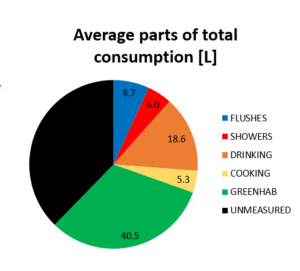
- Water monitoring: I monitored water consumption like during MDRS 175. The whole crew participated in and kept track of drinking, cooking water, flushes, showers and Greenhab usage. The main differences with MDRS 175 we can spot is that flushes are now very reasonable, as one flushes consumes roughly 8 times less with the new system. In the other hand, the Greenhab consumes way more than last year, where it was just restarted after it burned down. This term is now the second biggest one, after the remaining one, composed mostly of dish washing.
4) MDRS 189 videos, photos, documentary
We would like to thank Laure Andrillon, independent journalist and TF1 team composed of Axel Monnier and Bertrand Guez, who both “played the game” and understood that our operations on the field are surely not yet at astronauts and agencies professional level but are also far more than amateur activities.
5) Conclusions
In conclusion, we had many experiments related to the human factors and the EVAs efficiency. We analyzed the impact of the isolation and the confinement on our efficiency. This team was together thanks to our common dream of space exploration. After spending 2 years in our aerospace engineering school in France, our crew understands the importance of defining roles within a team and will learn to cope with high-stress situations in small living spaces. Completing a mission together at MDRS challenged us to improve our professional communication while expanding our friendships and our shared passion for exploration.
We consider our mission to be a success and we are happy of what we have done during our three-weeks simulation.
We would like to extend our gratitude to the MDRS Mission Support Team who have supported our crew every evening during the Comms window. Special thanks go to Shannon Rupert, Atila Meszaros, Scott Davis, Peter Detterline, Dr. Robert Zubrin and the Mars Society, The Musk Foundation and all the previous and next Crews.
Ad astra!
Victoria Da-Poian , Louis Mangin
Crew 189 Commanders (and really proud of this awesome crew)
Jérémy Auclair, Gabriel Payen, Benoit Floquet, Alexandre Martin, Laurent Bizien



















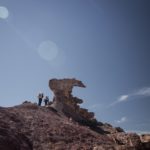
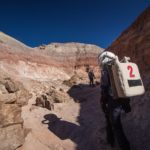
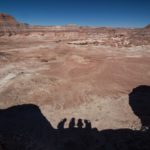
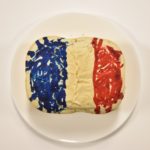
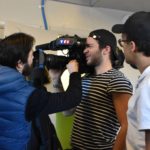
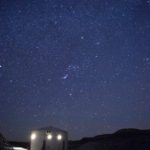
You must be logged in to post a comment.